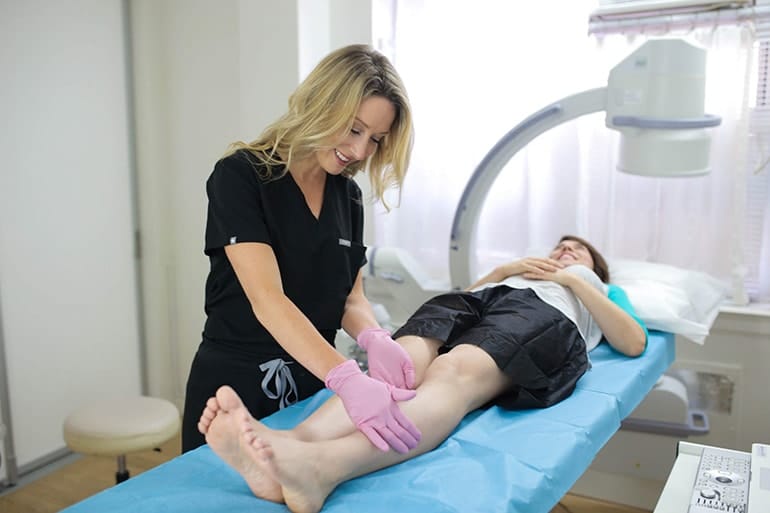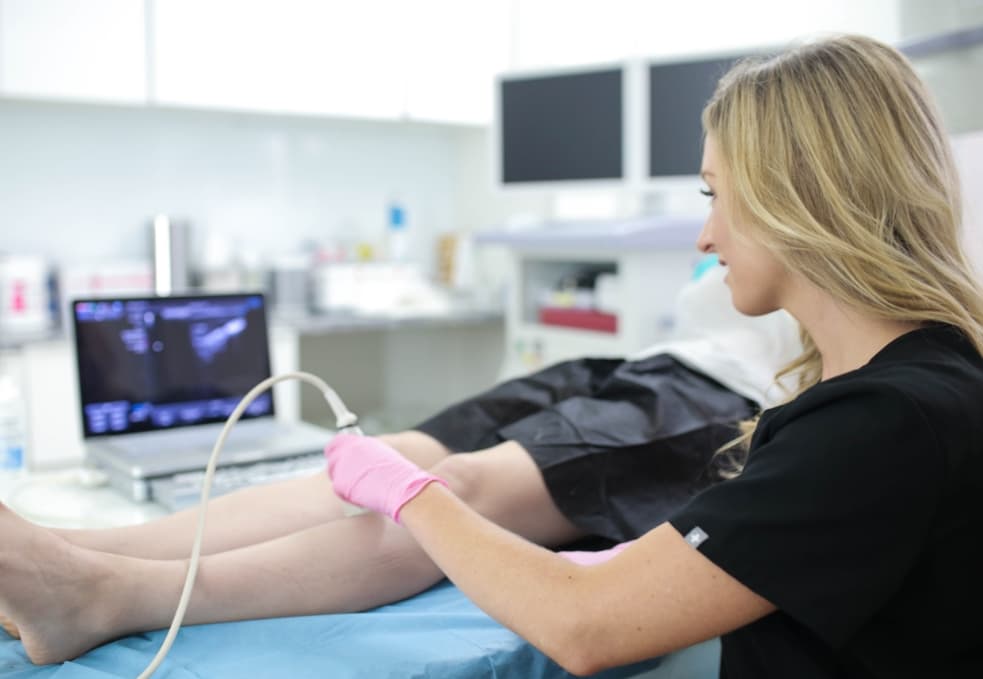Are you tired of dealing with the discomfort and unsightly appearance of varicose veins and spider veins? Do you wish there were better, more advanced treatment options available to help you regain your confidence and alleviate the pain? At Maryland Vein Center, we are committed to staying at the forefront of medical advancements in vein treatment technology. In this guide, we explore the latest advances in minimally invasive vein treatments, highlighting the benefits they offer and how they can help you reclaim the health and beauty of your legs.

What Are Varicose Veins & Spider Veins?
Varicose veins are enlarged, twisted veins that usually appear on the legs and can cause pain, swelling, and discomfort. Spider veins, on the other hand, are smaller, web-like veins that can appear on the legs and face, often causing cosmetic concerns. Both conditions result from underlying issues with vein function, typically involving faulty valves that allow blood to flow backward and pool in the veins. These issues can lead to the development of varicose and spider veins. Fortunately, advances in minimally invasive procedures have made it easier than ever to treat these conditions effectively.
Minimally Invasive Vein Treatments
Gone are the days when varicose vein surgery was the go-to option for addressing vascular issues. Traditional varicose vein surgery, also known as vein stripping, involved making large incisions, removing the damaged vein, and often necessitated a lengthy recovery period. This outdated approach not only caused considerable discomfort but also resulted in noticeable scarring. Furthermore, it failed to address the root cause of the problem, as it primarily focused on symptomatic relief.
In stark contrast, cutting-edge minimally invasive vein treatments have emerged as the preferred choice for patients seeking effective solutions. These advanced procedures, such as Endovenous Laser Ablation (EVLA), Radiofrequency Ablation (RFA), and VenaSeal, require only tiny incisions or injections, minimizing discomfort and reducing recovery times. Most importantly, these treatments target the root causes of vein issues, ensuring a higher success rate. With minimal scarring and the ability to resume daily activities immediately, minimally invasive vein treatments offer patients a vastly improved experience.
Sclerotherapy
Sclerotherapy is a highly effective and minimally invasive procedure used to treat spider veins and smaller varicose veins. This popular vein treatment involves the injection of a special solution, known as a sclerosant, directly into the affected veins. The sclerosant irritates the inner lining of the vein, causing it to collapse and eventually fade from view. Sclerotherapy is an outpatient procedure that can typically be performed in the comfort of a vein specialist’s office, requiring no hospitalization.
Endovenous Laser Ablation (EVLA)
Endovenous Laser Ablation (EVLA) is a cutting-edge minimally invasive procedure to treat larger varicose veins. This advanced technique utilizes laser energy to seal off and close malfunctioning veins. During an EVLA procedure, a thin laser fiber is inserted into the affected vein through a small incision. Once inside, the laser emits precise bursts of energy, generating heat that causes the vein walls to contract and seal shut. This process redirects blood flow to healthier veins, relieving the pressure and discomfort associated with varicose veins.
Radiofrequency Ablation (RFA)
Radiofrequency Ablation (RFA) employs radiofrequency energy to generate heat, which is applied to the affected vein to seal it off and redirect blood flow to healthier vessels. During an RFA procedure, a thin catheter is inserted into the problematic vein through a small incision. Once in place, the catheter emits radiofrequency energy, which heats the vein wall, causing it to collapse and close. This closure prevents the vein from functioning, relieving the pressure and symptoms associated with varicose veins.
VenaSeal
VenaSeal is designed to effectively treat varicose veins by using a medical adhesive to seal the problematic vein shut. The VenaSeal procedure begins with a tiny catheter being inserted into the affected vein through a small incision. Once the catheter is in place, a specially formulated medical adhesive is injected into the vein. This adhesive seals the vein shut, rerouting the accumulated blood into healthier leg veins. Because VenaSeal does not involve heat or thermal energy, there is no risk of nerve damage or skin burns.
ClariVein
ClariVein combines mechanical and chemical approaches to treat varicose veins. The ClariVein procedure involves using a specialized catheter with a rotating wire tip that is inserted into the affected vein through a tiny incision. Simultaneously, a special sclerosant solution is delivered through the catheter to irritate the vein’s lining and induce closure. What sets ClariVein apart is its versatility; it can be used to treat a wide range of varicose veins, regardless of size or location. Patients typically experience minimal discomfort during the procedure.
Ambulatory Phlebectomy
Ambulatory phlebectomy is designed to target larger varicose veins that may not be effectively treated with other minimally invasive methods. During the procedure, a vein specialist makes tiny, micro-incisions near the varicose veins to be removed. Small hooks or tools are then used to gently extract the affected veins through these incisions. The procedure is performed under local anesthesia, ensuring that patients remain awake and comfortable throughout. It allows for the targeted removal of varicose veins while minimizing trauma to the surrounding tissue.
Why Choose Minimally Invasive Treatment:
- Minimized Discomfort: Minimally invasive procedures are significantly less painful than traditional surgical methods. They often require only local anesthesia, which means you can remain awake during the procedure and experience minimal discomfort.
- Shorter Recovery Time: One of the most significant advantages of minimally invasive treatments is their short recovery time. In many cases, patients can return to their normal activities immediately, whereas surgical procedures may require weeks of downtime.
- Reduced Scarring: Minimally invasive procedures typically involve small incisions or injections, resulting in minimal scarring. This is especially important for patients concerned about the cosmetic aspect of their treatment.
- High Success Rate: The latest advancements in vein treatment have led to highly successful outcomes. Patients can expect excellent results with minimal risks and complications.
At Maryland Vein Center, we prioritize accurate diagnosis and personalized treatment plans for our patients. Before recommending any vein treatment, our board-certified vein doctors perform a thorough evaluation, including duplex ultrasound imaging. This diagnostic step is essential for identifying the underlying causes of your varicose veins or spider veins, ensuring that the chosen treatment method is tailored to your specific needs.
Additional Treatment Options
Compression Therapy
Compression therapy is a non-invasive and highly effective method used to improve blood circulation in the legs and alleviate symptoms associated with varicose veins, spider veins, and other venous conditions. This therapeutic approach involves the use of specially designed compression stockings or garments that apply controlled pressure to the legs, aiding in proper venous function. Compression therapy is often recommended as a complementary treatment to various minimally invasive vein procedures to enhance overall results.
The principle behind compression therapy is to promote the upward flow of blood from the legs towards the heart. By applying graduated pressure, compression garments help to reduce the diameter of veins, preventing blood from pooling and improving venous return. This, in turn, can alleviate symptoms such as pain, swelling, and fatigue associated with venous insufficiency. Patients can wear compression stockings throughout the day, and the level of compression is prescribed by a vein specialist based on the individual’s condition and needs.
Lifestyle Modifications
Our vein specialists may recommend lifestyle changes to complement your treatment plan. While lifestyle changes can’t treat varicose veins, they can prevent the condition from worsening and reduce the risk of recurrence after vein treatment. Lifestyle changes may include:
- Regular Exercise: Engaging in physical activity, such as walking or swimming, can promote better blood circulation and strengthen leg muscles, reducing the risk of varicose veins.
- Maintaining a Healthy Weight: Achieving and maintaining a healthy weight can alleviate excess pressure on the veins, reducing the likelihood of varicose veins.
- Dietary Improvements: A balanced diet rich in fiber and antioxidants can support overall vascular health and prevent conditions that may exacerbate vein issues.
- Elevating Legs: Elevating the legs periodically, especially after prolonged periods of sitting or standing, can help improve blood flow and reduce swelling.
- Avoiding High Heels and Tight Clothing: High-heeled shoes and tight clothing can hinder proper circulation, so opt for comfortable footwear and loose-fitting attire.
- Regular Leg Movement: Avoid sitting or standing for extended periods; take short breaks to move and stretch your legs every 30 minutes.
- Avoiding Smoking: Smoking can negatively affect circulation, so quitting or avoiding tobacco products is beneficial for vein health.
- Leg Elevation While Resting: Elevating the legs while resting, especially at night, can help reduce swelling and alleviate discomfort.
Visit Us at Maryland Vein Center
If you’re ready to explore the latest advances in vein treatment and regain the confidence and comfort you deserve, visit us at Maryland Vein Center. Our team of board-certified vein doctors is dedicated to providing the highest quality care and personalized treatment plans. We also offer free insurance verification to help you understand your coverage options. Our convenient location at 10215 Fernwood Rd, Suite 301, Bethesda, Maryland, just outside of Washington, DC in Silver Spring, Maryland, ensures you have easy access to our state-of-the-art vein center. Contact us today to schedule your consultation.





